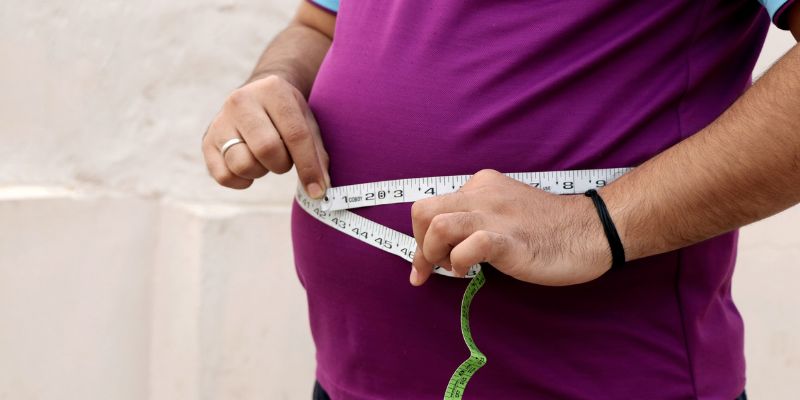Updated guidelines suggest that people should measure their waist to ensure they do not have excess dangerous fat around their abdomen.
According to the National Institute for Health and Care Excellence (NICE), to limit health risks, an adult’s waist should measure less than half of their height.
Measuring body mass index (BMI) can also be helpful, however it does not consider excess weight around the abdomen.
Excess weight around the middle increases the likelihood of developing conditions such as type 2 diabetes, high blood pressure, heart disease and stroke.
NICE has revealed new draft guidance which suggests that some Asian and black ethnic groups are more susceptible to this kind of fat build-up around the waist, called “central adiposity”.
They are advised to use lower BMI thresholds to classify obesity to help determine their specific health risks.
When measuring the waist, the guidelines state: “Explain to people that to measure their waist, they should find the bottom of their ribs and the top of their hips, wrap a tape measure around the waist midway between these points and breathe out naturally before taking the measurement.”
This “waist-to-height” ratio is suitable to be used for both sexes and all ethnic groups but is not accurate for people with a BMI over 35, pregnant women, or children younger than two years old.
Risk of disease
The most up-to-date estimates state that in England 28 per cent of adults are obese and 36 per cent are overweight. This issue is costing the NHS more than £6bn.
According to Professor Naveed Sattar, professor of metabolic medicine at the University of Glasgow, it is “uncertain” whether this new message gets taken up or not, but it does not hurt to try “new ways” to get people thinking about their health.
Other experts believe that the method of measuring your waist does not work for very short people or people over 60-years-old who may have become shorter due to aging.
Professor Rachel Batterham, consultant in obesity, diabetes and endocrinology, who is on the guidelines committee, explained: “Increased fat in the abdomen increases a person’s risk of developing several life-limiting diseases including type 2 diabetes and heart disease.
- Link between BMI and diabetes risk varies across the world
- Pre-eclampsia leads to higher childhood BMI
“Waist-to-height ratio is a simple, easy-to-use measure that identifies people who are at increased health risk and would benefit from weight management support to improve their health.”
A sensitive subject
The guidance advises that GPs and nurses should ask an individual’s permission before discussing their weight and to “discuss it in a sensitive manner”.
Weight management advice is commonly adapted for the individual and concentrates on improving diet and exercising more regularly, along with potential treatments and surgery.
Dr Paul Chrisp, director of the centre for guidelines at NICE, said these new guidelines help people understand the factors that affect their health and how to address these factors.
These new suggested recommendations can be commented on by healthcare professionals and the public before the guidelines are published in May.
The improved guidelines also state that doctors should consider using this “waist-to-height” ratio for children and young people over the age of five to evaluate and predict future health risks.
Recent NHS data states that there was a considerable rise in childhood obesity in England during the pandemic. It states that 25 per cent of children are classed as obese by the time they leave primary school.
According to Dr Nivedita Aswani, consultant paediatrician specialising in diabetes and weight management at Sheffield Children’s Hospital, young children are also at risk of the negative effects of fat around the waist.
BMI thresholds are:
- 5 kg/m2 to 24.9 kg/m2 = healthy weight
- 25 kg/m2 to 29.9 kg/m2 = overweight
- 30 kg/m2 to 34.9 kg/m2 = obesity class 1
- 35 kg/m2 to 39.9 kg/m2 = obesity class 2
- 40 kg/m2 or more = obesity class 3
Find a BMI healthy weight calculator here.





